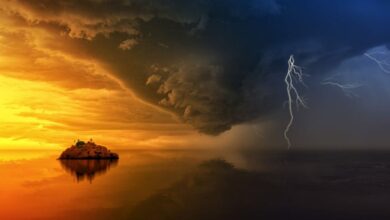When Is the Peak Time to View the Aurora Borealis
The Aurora Borealis, often referred to as the Northern Lights, is a mesmerizing natural light display that captivates millions of spectators each year. This dazzling phenomenon occurs when charged particles from the sun collide with atoms in Earth’s atmosphere, creating vibrant waves of color that dance across the night sky. For those hoping to witness this breathtaking spectacle, timing and location are crucial. Understanding the peak times to view the Aurora Borealis can greatly enhance the experience.
Optimal Months for Viewing
The best months to see the Northern Lights generally fall between late September and early April. During this period, the nights are long and dark, providing ample opportunity to catch a glimpse of the auroras. The autumn and winter months are particularly favorable as the weather tends to be clearer and the skies darker, which increases visibility. Late winter, specifically from January to March, is often regarded as the pinnacle for aurora viewing due to the extended hours of darkness and typically stable weather conditions.
Geographical Considerations
Location plays a pivotal role in your chances of witnessing the Northern Lights. Areas located near the Arctic Circle, such as parts of Canada, Alaska, Norway, Sweden, and Finland, offer the best vantage points. The further north you venture, the more likely you are to experience this stunning phenomenon. Popular destinations include Yellowknife in Canada, Tromsø in Norway, and Fairbanks in Alaska, each of which boasts exceptional viewing conditions. When planning your trip, remember to consider light pollution. Seek out remote locations away from city lights for the clearest views.
Time of Night
While the auroras can appear at any time after dark, the peak viewing hours typically occur between 10 PM and 2 AM. During this time, the solar activity that generates the auroras is often at its height, and the skies tend to be darker, enhancing visibility. Keep an eye on aurora forecasts, which provide real-time updates on solar activity. Websites and apps dedicated to aurora tracking can help you plan your outings around the best chances for sightings.
Solar Activity and the 11-Year Cycle
The intensity of the Aurora Borealis is closely linked to solar activity, which follows an approximately 11-year cycle. This cycle includes periods of solar maximum, when the sun is particularly active, leading to increased chances of auroras. The last solar maximum occurred around 2012, and the next is expected around 2025. During these peak solar years, chances for auroras increase significantly, as more solar particles are released into space. Monitoring solar activity can provide valuable insights into the best times to plan your aurora-viewing adventures.
Weather Conditions
Weather can greatly impact visibility, so it’s essential to keep an eye on local forecasts. Clear skies are ideal for viewing the Northern Lights, as clouds can obstruct the view. Winter months often bring unpredictable weather, so be prepared for sudden changes. Check local conditions regularly and be flexible with your plans. Sometimes, a short drive away from a cloudy area can lead to a spectacular sighting.
Preparing for Your Aurora Adventure
To make the most of your aurora-viewing experience, proper preparation is key. Dress warmly in layers to combat the cold temperatures typical in northern regions during peak viewing months. Bring along a camera with a tripod to capture the stunning displays. Familiarize yourself with your surroundings, and consider joining guided tours that specialize in aurora hunting for expert advice and optimal viewing spots.
The Magic of the Aurora
Witnessing the Aurora Borealis is a bucket-list experience for many, and knowing when to go can make all the difference. By targeting the right months, choosing optimal locations, and keeping an eye on solar activity and weather conditions, you can maximize your chances of experiencing the magic of the Northern Lights. Whether you are a seasoned traveler or a first-time adventurer, the thrill of seeing the auroras dance across the sky is an unforgettable moment that will leave you in awe of nature’s beauty.







